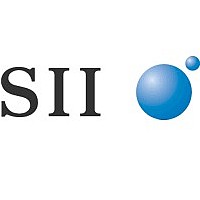S-8241 Seiko Instruments, S-8241 Datasheet - Page 15

S-8241
Manufacturer Part Number
S-8241
Description
Battery Protection IC for 1-Cell Pack
Manufacturer
Seiko Instruments
Datasheet
1.S-8241.pdf
(32 pages)
Available stocks
Company
Part Number
Manufacturer
Quantity
Price
Part Number:
S-8241AAAMC-GAA-T2
Manufacturer:
SEIKO/精工
Quantity:
20 000
Part Number:
S-8241AAMC
Manufacturer:
SEIKO
Quantity:
20 000
Company:
Part Number:
S-8241AAQMC-GAQ-T2
Manufacturer:
SEIKO
Quantity:
38 253
Company:
Part Number:
S-8241AARMC-GAR-T2
Manufacturer:
SEIKO
Quantity:
3 186
Part Number:
S-8241AASMC-GAS-T2
Manufacturer:
SEIKO/精工
Quantity:
20 000
Company:
Part Number:
S-8241AATMC-GAT-T2
Manufacturer:
SEIKO
Quantity:
7 115
Company:
Part Number:
S-8241AAVMC-GAV-T2
Manufacturer:
ANALOGIC
Quantity:
3 123
Company:
Part Number:
S-8241AAXMC-GAXT2G
Manufacturer:
SEIKO
Quantity:
18 000
Part Number:
S-8241AAXMC-GAXT2G
Manufacturer:
SEIKO/精工
Quantity:
20 000
Part Number:
S-8241AAXMC-GAXT2S
Manufacturer:
SEIKO/精工
Quantity:
20 000
Rev.4.1
Overdischarge Condition (for products with power-down function)
Overdischarge Condition (for products without power-down function)
Charger Detection
When the battery voltage drops below the overdischarge detection voltage (V
normal condition and it continues for the overdischarge detection delay time (t
turns the discharging control FET off and stops discharging. This condition is called overdischarge
condition. After the discharging control FET is turned off, the VM pin is pulled up by the R
between VM and VDD in the IC. Meanwhile the potential difference between VM and VDD drops below 1.3
V (typ.) (the load short-circuiting detection voltage), current consumption of the IC is reduced to the
power-down current consumption (I
pins are shorted by the R
The power-down condition is released when a charger is connected and the potential difference between
VM and VDD becomes 1.3 V (typ.) or higher (load short-circuiting detection voltage). At this time, the FET
is still off. When the battery voltage becomes the overdischarge detection voltage (V
note), the S-8241 turns the FET on and changes to the normal condition from the overdischarge condition.
Remark If the VM pin voltage is no less than the charger detection voltage (V
When the battery voltage drops below the overdischarge detection voltage (V
normal condition and it continues for the overdischarge detection delay time (t
turns the discharging control FET off and stops discharging. When the discharging control FET is turned
off, the VM pin is pulled up by the RVMD resistor between VM and VDD in the IC. Meanwhile the potential
difference between VM and VDD drops below 1.3 V (typ.) (the load short-circuiting detection voltage),
current consumption of the IC is reduced to the overdischarge current consumption (I
is called overdischarge condition. The VM and VDD pins are shorted by the RVMD resistor in the IC under
the overdischarge condition.
When a charger is connected, the overdischarge condition is released in the same way as explained above
in respect to products having the power-down function. For products without the power-down function, in
addition, even if the charger is not connected, the S-8241 turns the discharging control FET on and
changes to the normal condition from the overdischarge condition provided that the load is disconnected
and that the potential difference between VM and VSS drops below the overcurrent 1 detection voltage
(V
battery voltage reaches the overdischarge release voltage (V
If the VM pin voltage is lower than the charger detection voltage (V
condition is connected to a charger, overdischarge hysteresis is released, and when the battery voltage
becomes equal to or higher than the overdischarge detection voltage (V
released (the discharging control FET is turned on). This action is called charger detection. (The charger
detection reduces the time for charging in which charging current flows through the internal parasitic diode
in the discharging control FET.)
If the VM pin voltage is not lower than the charger detection voltage (V
condition is connected to a charger, the overdischarge condition is released (the discharging control FET is
turned on) as usual, when the battery voltage reaches the overdischarge release voltage (V
IOV1
_01
), since the VM pin is pulled down by the RVMS resistor between VM and VSS in the IC when the
overdischarge condition is connected to a charger, the overdischarge condition is released (the discharging
control FET is turned on) as usual, provided that the battery voltage reaches the overdischarge release
voltage (V
DU
) or higher.
VMD
resistor in the IC under the overdischarge and power-down conditions.
PDN
Seiko Instruments Inc.
). This condition is called power-down condition. The VM and VDD
BATTERY PROTECTION IC FOR 1-CELL PACK
DU
) or higher.
CHA
CHA
) when a battery in overdischarge
CHA
DL
) when a battery in overdischarge
), when the battery under
), the overdischarge condition is
DL
DL
DL
DL
) during discharging under
) during discharging under
) or longer, the S-8241
) or longer, the S-8241
DL
OPED
) or higher (see
S-8241 Series
). This condition
VMD
DU
resistor
) or higher.
15













